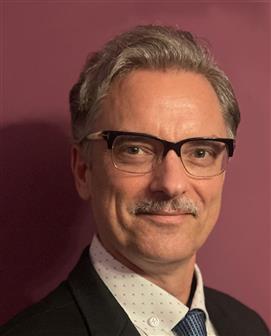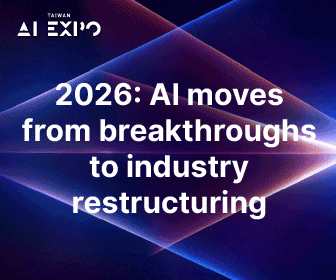In 2022, as global inflation has been revised up and with the threats of the conflict in Eastern Europe, the world economy is facing an increasingly challenging and uncertain outlook. Although the market seems to be lessening demand for PCs and consumer electronics, the demand for leading-edge process nodes seems to remain high and continues with high attention because this technology powers high performance computing, 5G/6G, advanced servers, and mobile phones in our pockets.
According to the SEMI survey report published on July 12th, 2022, titled "GLOBAL TOTAL SEMICONDUCTOR EQUIPMENT SALES ON TRACK TO RECORD $118 BILLION IN 2022", Global sales of total semiconductor manufacturing equipment are forecast to reach a record US$117.5 billion in 2022, rising 14.7% from the previous industry high of $102.5 billion in 2021, and increase to $120.8 billion in 2023.
This interview with Peter Karl Loewenhardt, Senior Vice President at Tokyo Electron Taiwan (TEL in Taiwan), takes a closer look at the new development of leading-edge nodes and how TEL is fulfilling their customers' demand. For example, the industry has moved towards more three-dimensional transistor structures such as the upcoming introduction of Gate-All-Around (GAA) or Nanosheet FET technologies for producing logic chips of the 3nm or 2nm technology generations.
Manufacturability and cost become the key to EUV technology
As extreme ultraviolet (EUV) lithography has moved into the mainstream in advanced semiconductor production, the technologies surrounding it such as spin-on resist and post-exposure development continuously are becoming technically more demanding. The industry is developing advanced exposure technologies for the next process nodes. As one keeps moving down the technology process nodes, EUV patterning becomes more and more critical. The leading foundries have moved EUV lithography into production starting at versions of the 7nm node. Nowadays, the 3nm process node is transitioning into the manufacturing stage. The technology is employing further EUV layers to print smaller features and to reduce masks. In fact, High NA is also on the horizon, and TEL should be able to support this effort well as we have our Coater/Developer equipment installed in imec with their high NA EUV tool.
There are many challenges for EUV patterning. For example, resist application and pre-treatments as well as the development after exposure are particularly challenging processes that need to be developed very carefully. The process involves many steps before and after EUV exposure that must be done the right way to solve the technical concerns. Additionally, upstream and downstream technologies like vertical etch, deposition and wet cleaning are essential. Furthermore, there has been a growing need for improvements in the trade-off between photoresist sensitivity, resolution, and line edge roughness. With the exploration of upcoming Metal Oxide Resists (MOR), many performance considerations such as EUV dose, line wiggling/roughness, pattern collapse, bridging defects, etc. present opportunities for further EUV performance improvements. TEL has a very good market position for EUV patterning tools including deposition, Coater/Developer, etch, and cleaning systems and continually invests in improvements in both technology and manufacturability.
One must not only deliver leading-edge process technology but also excellent manufacturability to be able to have repeatable performance in every manufacturing process. Additionally, for any technology added to the EUV patterning process, the cost is a major factor that must take significant priority. "With respect to manufacturability, focal areas are how to maximize the output of production, minimize the cycle time, and reduce cost. These are all areas where TEL is focusing," he adds.
Meanwhile, there is a growing importance of Advanced Packaging and System Integration. 3nm process node can be integrated with other chips manufactured using different technology nodes, continually advancing on-chip technologies. Heterogeneous integration of different dies together in 3D can help continue the density increase in a more economically feasible way. This approach will make future chips more affordable, which will benefit the chip industry and does make it very exciting. This momentum will continue to next process nodes.
Continuing ESG initiatives aimed at continuous corporate value enhancement
Semiconductor Fabs consume large amounts of electricity, water, and chemicals. While foundries are getting pushed for improving the performance of EUV lithography in the advanced nodes, there are many photoresist materials and specially designed chemicals to be used for solving stochastics defects as a significant concern to enable yield improvement. As a leading equipment manufacturer, TEL contributes by focusing on leading-edge semiconductor production equipment that can solve difficult technical problems and manufacture devices with a continual focus on reducing the impact on the global environment. This way at TEL we can continue to provide differentiated solutions to customers.
In the current technological evolution, one of the notable ESG initiatives is focused on the development of EUV lithography in high-volume manufacturing. There are several areas of focus, particularly in the areas of working with various organic photoresist materials and reducing the doses of EUV exposure. These improvements could be very beneficial, most notably shortening the EUV scanning cycle time and maximizing the EUV production output.
EUV scanners are especially expensive. Improved usage of EUV scanners is very valuable for customers. TEL helps customers to increase EUV output performance through technical innovation. Technologies such as ESPERT are enablers for driving down EUV related costs and carbon footprint.
Future generations of EUV lithography are expected, and there are several challenges to be overcome. The optimization of the many steps of applying photoresist to wafers (including treatments, etc.) with the optimization of the many steps in post-exposure development focus on improving these challenges, improving yield, etc. Additionally the new technologies could potentially reduce chemical and electricity usage to increase environmental performance through the collaboration of supply chains.
With sustainable investments becoming more mainstream, in addition to medium-term environmental goals for 2030, TEL set a long-term environmental goal of reducing greenhouse gas emissions to net zero by 2050 to take the lead in achieving Sustainable Development Goals (SDGs) in industry-wide. For example TEL's Digital Design Square located in Sapporo city in Japan, is a new base for further digital transformation activities enabling various Artificial Intelligence technologies that have demonstrated reduced resource usage in R&D.
TEL will continue to strive to fulfilling its sustainability roles and drive SDGs throughout the efforts to match the targets for improving both technical performance and the environmental performance. At SEMICON Taiwan 2022 Forum events, Loewenhardt is an invited speaker to talk about the EUV patterning technologies and performance improvement. The audience could join the event through the registration of SEMICON Taiwan websites at https://www.semicontaiwan.org/zh/node/4671

Peter Karl Loewenhardt, Senior Vice President at Tokyo Electron Taiwan



